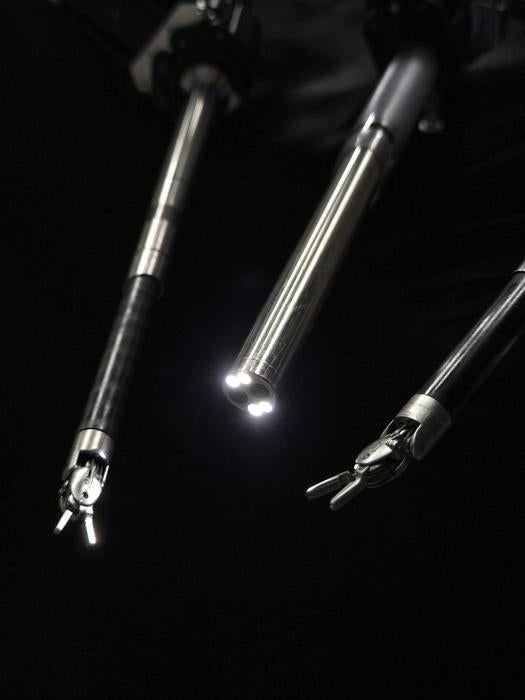A robot has performed a realistic surgery for the first time without human help.
Researchers at Johns Hopkins University said Wednesday that the robot had “unflappably” conducted a lengthy phase of a gallbladder removal on a lifelike patient, responding to voice commands from the team. It exhibited the expertise of a skilled human surgeon, even during unexpected scenarios typical in real-life, medical emergencies.
“This advancement moves us from robots that can execute specific surgical tasks to robots that truly understand surgical procedures,” medical roboticist Axel Krieger said in a statement. “This is a critical distinction that brings us significantly closer to clinically viable autonomous surgical systems that can work in the messy, unpredictable reality of actual patient care.”
The robot, known as “SRT-H” or “Surgical Robot Transformer-Hierarchy,” had trained on videos of surgeries, watching Johns Hopkins surgeons doing the procedure on pig cadavers. The videos had captions that described the tasks.
After watching the videos, the robot performed the surgery with 100 percent accuracy, Johns Hopkins said. Although it took the robot longer to perform the surgery, the results were comparable to that of a surgeon.
The robot, which was built with the same machine-learning architecture that powers the popular artificial intelligence chatbot ChatGPT, had to complete 17 minutes-long tasks, including identifying ducts and arteries, grabbing them precisely, strategically placing clips, and severing parts with scissors.
That’s more than when Krieger’s “Smart Tissue Autonomous Robot” performed the first autonomous robotic surgery on an animal — a laparoscopic surgery on a live pig — three years ago. That robot also had required specially marked tissue, had operated in a highly controlled environment, and was following a rigid surgical plan.
Conversely, SRT-H performed flawlessly across anatomical conditions that weren’t uniform. That was even the case when the researchers changed the robot’s starting position and when they added blood-like dyes, changing the appearance of the gallbladder and surrounding tissues.

Last year, Krieger used the system to train a robot to perform three crucial surgical tasks: manipulating a needle, lifting body tissue, and suturing. But, those tasks took just a few seconds each.
Next, the team of researchers wants to train and test the system on more types of surgeries, as well as expand its capabilities to perform a complete autonomous surgery.
“This work represents a major leap from prior efforts because it tackles some of the fundamental barriers to deploying autonomous surgical robots in the real world,” lead author Ji Woong "Brian" Kim, a former postdoctoral researcher at Johns Hopkins who’s now with Stanford University, said. “Our work shows that AI models can be made reliable enough for surgical autonomy—something that once felt far-off but is now demonstrably viable.”
The findings were published in the journal Science Robotics.







